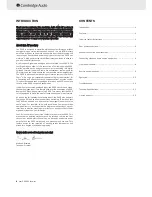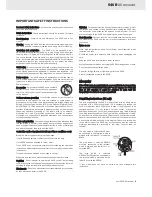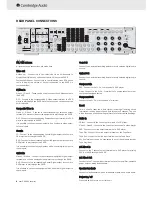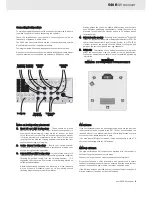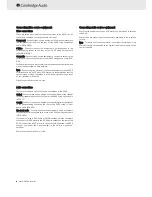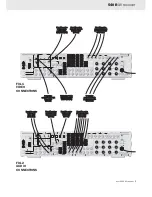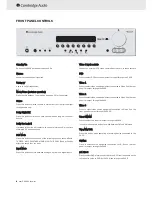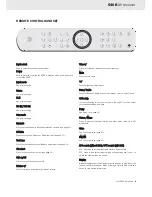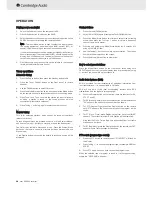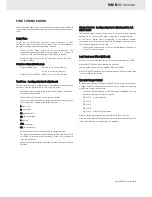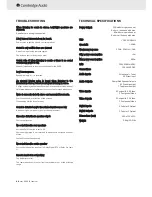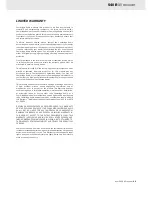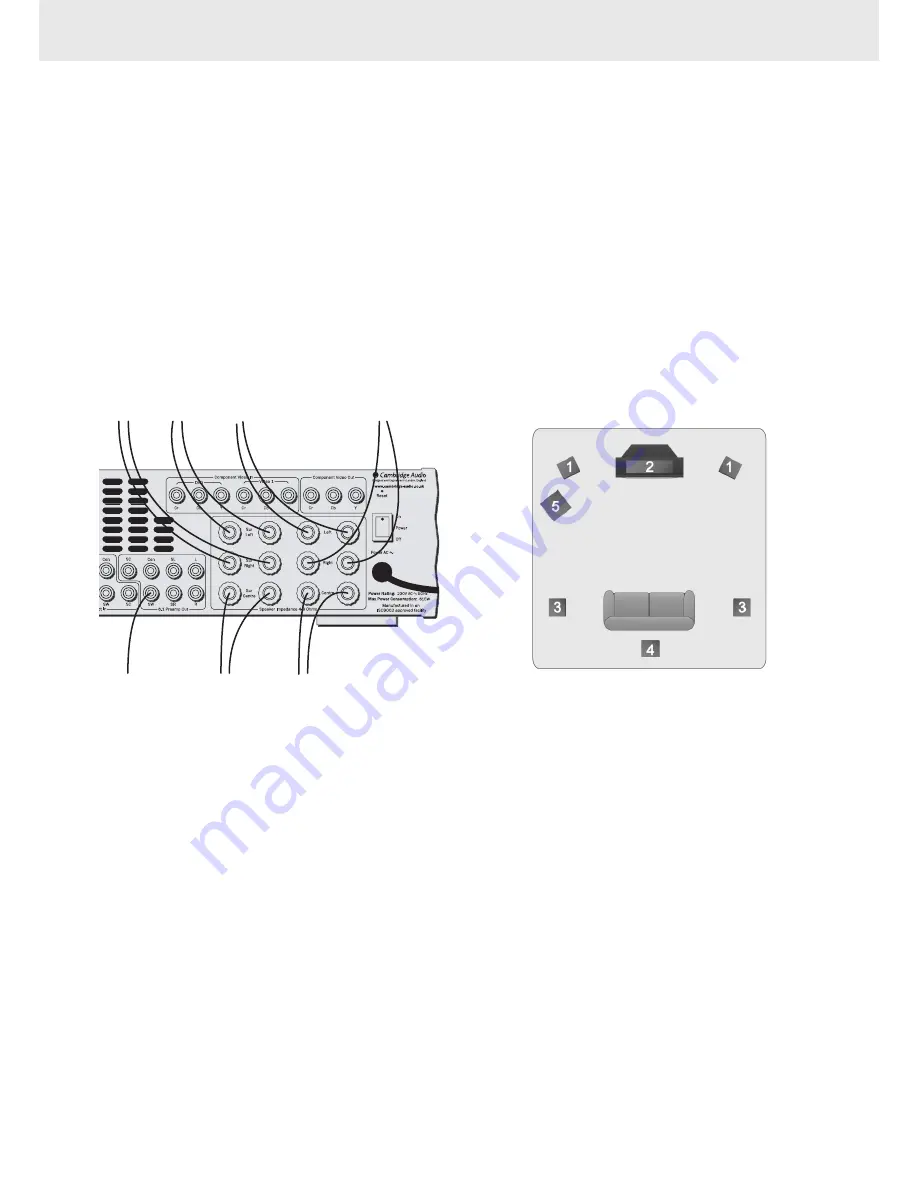
540R
AV receiver
azur 540R AV receiver
5
FM a
antenna
If you live reasonably close to a transmitter and want to use the provided
lead-type FM antenna, connect to the "FM 75 ohm" socket, extend the
lead and attach it to a window frame or wall with thumbtacks, or move
around the room, where reception is best
In an area where FM signals are weak, it may be necessary to use a 75
ohm unbalanced-type outdoor FM antenna.
AM lloop a
antenna
The high performance AM loop antenna provided with the receiver is
sufficient for good reception in most areas.
Connect the loop antenna's wires to the AM antenna terminals.
Place the antenna on a shelf, for example, and move around to obtain
the best reception, place as far away as possible from the entire system,
speaker leads and the power cords, to prevent unwanted noise.
If the AM loop antenna provided does not receive sufficient reception, it
may be necessary to use an outdoor AM antenna.
Connecting lloudspeakers
To avoid damaging the speakers with a sudden high-level signal, be sure
to switch the power off before connecting the speakers.
Check the impedance of your speakers. Connect speakers with an
impedance of between 4 and 8 ohms.
The 540R's red speaker terminals are the + (positive) terminals and the
black terminals are the - (negative) terminals.
The diagram below shows how loudspeaker connections are made.
Please note that all connections are made via loudspeaker cable except
the subwoofer which is connected via a standard RCA phono cable.
To ffront rright
speaker
To ffront lleft
speaker
To s
surround
left s
speaker
To s
surround
right s
speaker
To ffront c
centre
speaker
To s
surround
centre s
speaker
To s
subwoofer
Dipoles diffuse the sound in a slightly different way, and therefore
have different positioning requirements: ideally they should be
mounted to the side of the listener, and up to 15 degrees above
listening height
4.
Surround c
centre s
speaker
-
Required for enjoying Dolby
®
Digital EX
(Dolby is a registered trademark of Dolby Laboroatories) or DTS
®
-ES
audio (Under license from Digital Theater, System, In, or DTS (BVI)
Limited). Improves the quality of sound effects by filling the gap
between the surround left and rear right speakers.
5.
Subwoofer
-
The location of any dedicated subwoofer will greatly
effect the quantity and also the quality of the low frequencies.
Please see dedicated subwoofer manual for detailed positioning
information.
EXPERIMENT !!!
REMEMBER - IIF IIT S
SOUNDS R
RIGHT T
TO Y
YOU, IIT IIS R
RIGHT !!!
Notes o
on lloudspeaker p
placement
1.
Front lleft a
and rright lloudspeakers
-
These should be placed
equidistant to the left and right of your screen far enough apart to
ensure good stereo imaging. If they are too far apart or too close
to the corners of the room they will sound distracting and distant.
It may be desirable to experiment with the 'toe-in' of the units
(angling them towards the listening position) to optimise the front
speaker soundstage and imaging.
2.
Centre c
channel L
Loudspeakers
-
Ideally your centre channel
loudspeaker needs to be positioned directly above or below your
screen, facing the listening position.
3.
Surround lleft a
and rright L
Loudspeakers
-
If you are using normal hi-fi
loudspeakers as your surrounds they should be situated roughly at
listening height and facing into the listening position. It is
suggested that they are wall mounted or alternatively placed on
suitable speaker stands.
Bipolar-type surround speakers can be set up in much the same
way as standard 'monopole' types, so try positioning around
listening height and angle toward the listener

